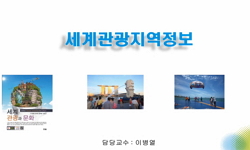The purpose of the research is to examine the hybridization character in culture and cultural interaction of language activity happening at the seaport city through the signboard language of Busan. In this research, we tried to consider the creative a...
http://chineseinput.net/에서 pinyin(병음)방식으로 중국어를 변환할 수 있습니다.
변환된 중국어를 복사하여 사용하시면 됩니다.
- 中文 을 입력하시려면 zhongwen을 입력하시고 space를누르시면됩니다.
- 北京 을 입력하시려면 beijing을 입력하시고 space를 누르시면 됩니다.
https://www.riss.kr/link?id=A99747608
- 저자
- 발행기관
- 학술지명
- 권호사항
-
발행연도
2013
-
작성언어
Korean
-
주제어
간판 언어 ; 해항도시 부산 ; 문화교섭 ; 리좀 ; 관광지 ; 대학가 ; 주택지 ; Signboard Language ; Sea Port city of Busan ; Culture Interaction ; Rhizome ; Tourist Spot ; University Street ; Residential Section
-
등재정보
KCI등재
-
자료형태
학술저널
- 발행기관 URL
-
수록면
309-331(23쪽)
- DOI식별코드
- 제공처
-
0
상세조회 -
0
다운로드
부가정보
다국어 초록 (Multilingual Abstract)
The purpose of the research is to examine the hybridization character in culture and cultural interaction of language activity happening at the seaport city through the signboard language of Busan. In this research, we tried to consider the creative aspect and transformation of the cultural interaction occurring at the seaport city. To perform this work effectively, we collected signboard names from 3 different types of region in Busan; 2 typical residential sections, a university street and a tourist spot, and we compared and analyzed their signboard languages.
In the first stage of analysis, we analyzed the mono-notation of the main signboard and marked language of the main signboard to find out the directivity of regional signboard language of Busan. First, the analysis indicates that in tourist spot (Gwangbok-dong and Nampo-dong district) there are many Western language words on the main signboard language, followed by Korean, Chinese character words, Mixed use words, Japanese and special words in sequence. Second, the language directivity of university street (near by Gyeongsung University and Pukyong National University) has been shown focus on Korean and Western language words as identically indicated on the results at tourist spot. Lastly, the language directivity of the residential section A (Daeyeon-dong) and B (Sajik-dong) is formed mainly with the Korean words.
Then at the second stage of analysis, we analyzed the statistics to find out the regional character (networkability) of signboard language. As a result, there are many Western language words, Chinese character words and Japanese on the signboard language in the tourist spot compared to other regions.
These results show that the Chinese character words, Japanese, and Western language words are dynamically created at signboard language of tourist spot with dense network, meaning characterizing the openness and hybridity. Secondly, there are many special words and Western language words at the signboard language of university street, and especially the Western language words are remarkable among them. And we can say that the Chinese character words of university street are declining, while Japanese notation is increasing on the other hand. Thirdly, there are many Korean words on the signboard language of residential section A (old town) and residential section B (new town) compared to the other regions relatively.
목차 (Table of Contents)
- Abstract
- 1. 머리말
- 2. 선행연구
- 3. 연구의 목적과 방법
- 4. 조사의 결과
- Abstract
- 1. 머리말
- 2. 선행연구
- 3. 연구의 목적과 방법
- 4. 조사의 결과
- 5. 데이터 분석 결과의 고찰
- 6. 맺음말
- 참고문헌
- REFERENCES
동일학술지(권/호) 다른 논문
-
- 대한일어일문학회
- 황진
- 2013
- KCI등재
-
- 대한일어일문학회
- 김경민
- 2013
- KCI등재
-
- 대한일어일문학회
- 申宗大
- 2013
- KCI등재
-
- 대한일어일문학회
- 황성하
- 2013
- KCI등재





 KCI
KCI DBpia
DBpia






